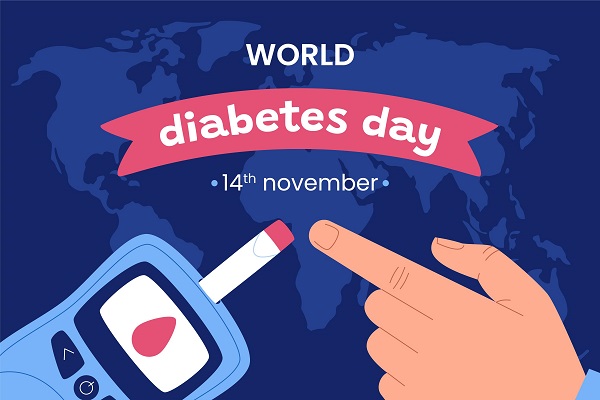Contributed by – Healthians Team
I eat healthy and exercise regularly, still I am dealing with diabetes. What can be the reason?
Obese and people with sedentary lifestyle are at risk of diabetes: is the strongest understatement on diabetes. Though this is true in a way, it does not ensure a diabetes free life for thin and active people. People mostly associate diabetes with obesity, gorging on foods and doing little or no exercise. Very few people know that the people who are thin or eat healthy can also suffer from Diabetes. The reason is that the main indicators for diabetes risk are:
- Visceral fat: The hidden fat that lies around the heart, liver, kidney and pancreas. A person who looks relatively slim can have high levels of undetected visceral fat, which could play a key role in the development of diabetes.
- Hereditary or genetics: If diabetes has been running in your family, then it could play a key role in development of diabetes.
Hence, people who have a control on their eating habits and even do regular exercises but have the above two factors are at a risk of developing diabetes or is already affected by it. And if they are wondering what causes diabetes, then you have now found the answer.
What Is Diabetes?
Diabetes mellitus or diabetes is a chronic, lifelong condition that affects the body’s ability to use the energy found in food.
It is a metabolism disease, in which the blood glucose, or blood sugar, levels are too high. Our body gets glucose comes from the food we eat. Glucose is important as it gets into the cells to provide them with the energy; this is done via a hormone called Insulin.
When there is insufficient production of insulin (either absolutely or relative to the body’s needs), production of defective insulin (which is uncommon), or the inability of cells to use insulin properly and efficiently leads to hyperglycaemia and diabetes.
Types Of Diabetes
There are three main types of diabetes and following are the causes of how do you get diabetes
Type 1 Diabetes
Type 1 Diabetes is an auto-immune condition. It is also referred to as insulin-dependent diabetes or juvenile-onset diabetes, because it often begins in childhood. The incidence of Type 1 diabetes is not impacted by our diet or lifestyle.
Cause: It is caused by the body attacking its own pancreas with antibodies. In people with type 1 diabetes, the damaged pancreases are not able to make insulin. It can also be caused by a genetic predisposition and could also be the result of faulty beta cells in the pancreas that normally produce insulin.
Type 2 Diabetes
What is type 2 diabetes? This is the most common type of diabetes. It is also called non-insulin-dependent diabetes and is a milder form of diabetes than type 1.
Cause:In this type the pancreas usually produce some insulin. The amount produced is not enough for the body’s needs, or the body’s cells are resistant to it. Insulin resistance, or lack of sensitivity to insulin happens primarily in fat, liver, and muscle cells.With insulin resistance, the pancreases have to work very hard, in order to produce more insulin. But even then, there is not enough insulin to keep the sugars levels normal.
There is no cure for Type 2 Diabetes.
Gestational Diabetes
This type of diabetes is triggered during pregnancy. It is often diagnosed during middle or late pregnancy.
Cause: This happens because high blood sugar levels during pregnancy are circulated through the placenta to the baby. Gestational diabetes must be controlled to protect the baby’s growth and development. This type of diabetes usually resolves after pregnancy, but it puts the mother at a risk of developing Type 2 diabetes later in life.
Symptoms Of Diabetes
The symptoms of diabetes will vary depending on how much sugar is elevated. The common signs and symptoms of type 1 and 2 diabetes are:
- Increased thirst
- Frequent urination
- Extreme hunger
- Unexplained weight loss
- Presence of ketones in the urine (ketones are a by-product of the breakdown of muscle and fat that happens when there’s not enough available insulin)
- Fatigue
- Irritability
- Blurred vision
- Slow-healing sores
- Frequent infections, such as gums or skin infections and vaginal infections
Test For Diabetes
The different types of diabetes can be diagnosed with a blood test. Following test are advised
- Fasting plasma glucose test (FPG)
- HbA1C Test
- Random plasma glucose test (RPG) Test
- For gestational diabetes :
- Glucose challenge test
- Oral glucose tolerance test (OGTT)
Getting a blood test for diabetes regularly, in case you are a diabetic or have the risk factors, will help you manage diabetes better.
Management Of Diabetes
People always have curiosity to know how diabetes can be cured or how to control diabetes. The fact is diabetes cannot be cured, but the sugar levels can be kept in control. An important part in the management of diabetes is maintaining a healthy weight through a healthy diet and exercise plan.
- Healthy eating habits: Increasing your intake of fruits, vegetables, whole grains, foods that are high in fibre and low in fat and calories.
- Physical activity: Exercise helps in lowering the blood sugar level of the body by moving sugar into the cells, where it’s used for energy. Exercise also increases the sensitivity to insulin, which means the body needs less insulin to transport sugar to the cells. Hence, it is important to exercise regularly.
- Regular monitoring of blood sugar levels: Effective management of diabetes is the key to keeping sugar levels and further complications under control. Regularly checking sugar levels acts like a reality check that helps changing medicines and lifestyle accordingly. A full body checkup including sugar levels will help study the impact of diabetes on other body parts as well. So, never shy away or avoid regular diabetes test.
Managing your Diabetes is not a Science, It is an Art!




